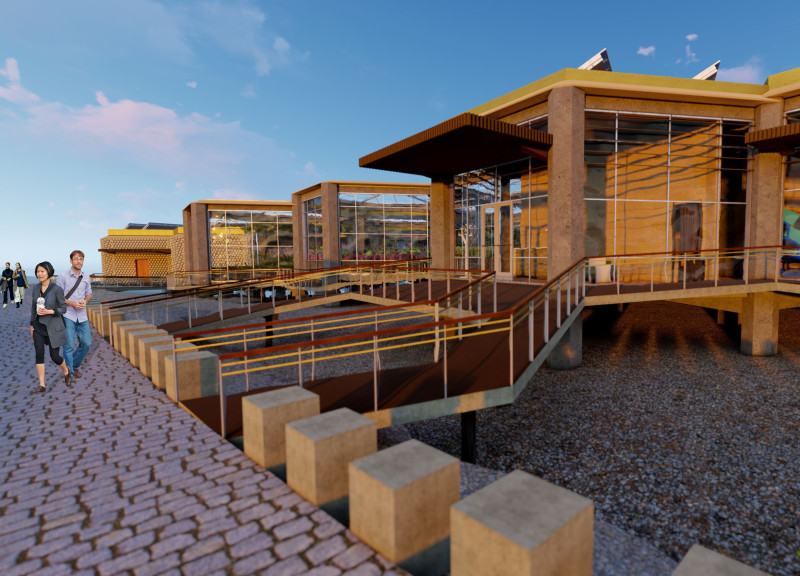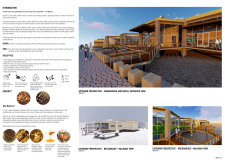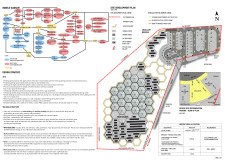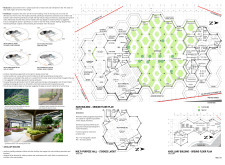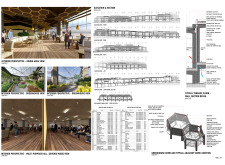5 key facts about this project
The architectural design project under review is a sustainable greenhouse restaurant situated in the Myvatn region of Iceland. This project aims to combine local agricultural practices with a unique dining experience, promoting sustainable tourism in a location known for its natural beauty and geothermal features. The design takes inspiration from the efficiency of beehives, utilizing a hexagonal layout to create interconnected spaces that support both functionality and community engagement.
The primary function of the restaurant is to provide an innovative culinary experience while also serving as a hub for local food production. By integrating a greenhouse with dining facilities, the design allows guests to witness food cultivation firsthand, highlighting the importance of sustainability. The architectural decisions reflect a commitment to reducing environmental impact while enhancing visitor education.
Sustainable Practices in Design
The architectural approach emphasizes the use of locally sourced materials and renewable energy. Key materials employed include steel for structural integrity, reinforced concrete for foundational support, glass to optimize natural lighting, and wood for aesthetic warmth. Incorporating these materials not only aligns with the project’s sustainability goals but also integrates the building into its natural surroundings.
Energy efficiency is a focal point of the design, with solar panels strategically placed to harness sunlight, contributing significantly to the restaurant's energy needs. A rainwater harvesting system is also integrated, capturing and storing rainwater to be repurposed for greenhouse irrigation and other uses. These features collectively promote a self-sustaining environment that supports both the restaurant's operations and the surrounding ecosystem.
Interactive Living Spaces
The spatial organization within the project is designed to enhance visitor interaction with both the natural landscape and the restaurant's operations. The dining area is thoughtfully positioned to maximize views of the Myvatn landscape, creating a connection between patrons and the environment. Moreover, the greenhouse occupies a central role in the project, serving not only as a source of fresh produce but also as an educational space where visitors can engage with sustainable farming practices.
Elevated walkways connect the various sections of the restaurant, improving accessibility while minimizing disruption to the landscape. These walkways also serve as vantage points, allowing guests to appreciate the architectural design and surrounding natural features from different perspectives.
This greenhouse restaurant project stands out for its emphasis on education, sustainability, and community engagement through thoughtful architectural design. For those interested in the specifics, including architectural plans, sections, and designs, a deeper exploration of the project presentation is encouraged for a comprehensive understanding of its innovative approaches and unique architectural ideas.


